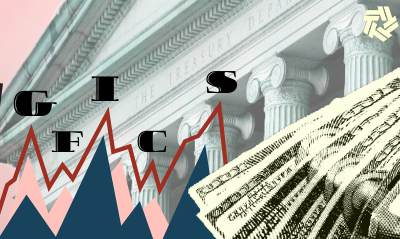

After the long-anticipated crash of the record 11-year bull market a lot of 401(k) investors worried about the hit their stock-fund investments had taken.
After the long-anticipated crash of the record 11-year bull market, a lot of 401(k) investors worried about the hit their stock-fund investments had taken. Others who learned their lessons from the Great Recession of 2008-2009 thought the downturn might be the equivalent of a fire sale.
In the case of federal and postal investors, that meant an opportunity to buy more shares of the stock-indexed C, S and I funds. Turns out they were right — that’s what most of the 45,219 (as of June 30) millionaires did.
So is it happening again?
The March nosedive of the stock market rattled a lot of investors, particularly those who were retired or close to retirement and have a major chunk of their nest egg in stocks. Some decided to get out while they still had time. Others saw and continued to see it as a buying opportunity. In the meantime the market, despite a worldwide pandemic with no quick or easy end in sight, continues to confound.
I asked Arthur S. Stein, a Washington area financial planner, for his thoughts on the January-June rollercoaster ride. He did the research and then proposed this headline to summarize the growth of the C, S and I funds during the first half of 2020. Like any really good headline, this one grabs your attention and says it all:
“Here is a quick summary of the TSP stock funds during the first half of 2020: Wow! And more wow!
“Volatility in the stock markets and the TSP stock funds (C, S and I) beat many historic records during the last six months. For instance, the C (S&P 500 Stock Index) fund went from a bull market peak to a bear market and then back to a bull market in less than six weeks. The C fund share price had declined 34% by late March. At the end of June, the share price was 39% higher. Click here for an explanation of bull and bear markets.
“The F fund (bonds) was strongly positive for most of this period. A major reason was purchases of bonds by the Federal Reserve, which resulted in historically low interest rates.
“It seems clear that the sharp stock market decline that began in February was caused by the COVID-19 Pandemic. The causes of the rebound in the second quarter are less certain. But often cited reasons include the declining growth of coronavirus infections in April (now reversed), business reopenings across the U.S. and the rest of the world, hopes for a COVID-19 vaccine and massive stimulus from global central banks including the Federal Reserve and the U.S. government.
“Bonds outperformed stocks year-to-date and over the last 12 months. It is only when looking at returns for five years and more that the historic outperformance of stocks over bonds is evident.
“The 15-year returns seem especially meaningful since they include the ‘Great Recession’ in 2007-2009. During the Great Recession, the C fund declined 55% from the previous high. Despite that decline, the 15-year average annual rate return was close to 9%. That was almost double the bond return.
“Past performance is no guarantee of future performance, but the five-, 10- and 15-year returns show that, historically, over long periods of time, well-diversified, and well-managed stock and stock fund portfolios outperformed bonds.
“Future returns are unknown.
“The outlook for the spread of the coronavirus is unclear, as new cases have reached record highs, indicating that the virus will be with us, in one form or another, for some time to come.
“The fate of the stimulus programs remains uncertain. Paycheck Protection Program loans, which provided critical assistance to small businesses over the past three months, end this month. Congress is debating whether to extend. It is also unclear what will become of the federal unemployment benefits included in the CARES Act, which also expire at the end of July. The Federal Reserve stimulus measures will probably continue but we don’t know how much Fed stimulus actions will affect the economy and the markets in the future. Despite all the stimulus, the current level of economic activity remains far below the levels of a year ago. It could be a long time before the U.S. and other economies recover.”
Look at the numbers, check out the growth. From bull to bear then quickly back to bull market again! What’s going on?
Stein, whose client base includes several self-made TSP millionaires, said it would be relatively easy to figure out what ended the bull market, but not so easy figuring out its quick (so far) recovery. He’ll be my guest today on our Your Turn radio show. at 10 a.m. EDT. You can listen here or on 1500 AM in the D.C. area. The show will also be archived so you can listen later or refer it to a friend.
By Amelia Brust
The Avedis Zildjian Company, also known as Zildjian, is the largest cymbal and drumstick maker in the world and one of the oldest musical instrument manufacturers in the world. Established in 1623 in Constantinople, its founder Avedis Zildjian was an Armenian metalsmith and alchemist who worked for the court of the Sultan of the Ottoman Empire.
Source: Wikipedia
Copyright © 2024 Federal News Network. All rights reserved. This website is not intended for users located within the European Economic Area.
Mike Causey is senior correspondent for Federal News Network and writes his daily Federal Report column on federal employees’ pay, benefits and retirement.
Follow @mcauseyWFED


